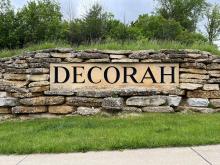
North East Mississippi Electric Power Association (NEMEPA) cooperatives celebrate another year of funding and progress toward building better broadband across nine service areas.
At a recent event, Northern District Public Service Commissioner Brandon Presley said: "We are going to be one of the most connected states in the United States of America in some of the most rural areas of America. It has been amazing to watch. This has been not just a top priority for me but also our co-ops."
Collectively, the NEMEPA cooperatives already offer broadband to over 84,000 members and expect to expand to over 182,000 members once the work is complete.
Nine NorthEast Power Cooperatives Bringing Fiber to Rural Residents
The NEMEPA expansion took off when the cooperatives were awarded (Rural Digital Opportunity Fund) RDOF grants to extend existing fiber networks or build new ones for their members.
Each district received a share:
- First Light Fiber by Alcorn County Electric (ACE Power), $5.5 million
- M-Pulse Fiber by Monroe County Electric, $8.1 million
- NT Spark by Natchez Trace Electric, $10.3 million
- NE SPARC by Northeast Mississippi Electric, $12.7 million
- Prentiss Connect by Prentiss County Electric, $6.8 million
- TVI Fiber by Tallahatchie Valley Electric, $20.1 million
- TEPA Connect by Tippah Electric, $6.7 million
- Tombigbee Fiber by Tombigbee Electric, $9.8 million
- Tishomingo Connect by Tishomingo County Electric, $10.9 million
The award is a 10-year commitment with each of the nine co-ops getting a 10 percent share of the overall funding until 2029.
Six out of Nine FTTH Networks are Completed
At the celebratory event, Presley reported that six of the cooperatives (Alcorn County Electric, Monroe County Electric, Natchez Trace Electric, Northeast Mississippi Electric, Prentiss County Electric and Tippah Electric) have completed their buildouts. Presley said he expects the other three (Tallahatchie Valley Electric, Tishomingo County Electric, and Tombigbee Electric) to complete their projects by the end of next summer.
ACE Power currently serves 7,000 subscribers and offers up to 10 gigabit symmetrical service throughout its service territory. ACE residential services range from symmetrical 200 Mbps connection for $60 to 2 Gbps for $100 Beyond access, ACE Power is encouraging broadband workforce development by becoming the first employer to adopt the Fiber Broadband Association’s Optical Telecom Installation Certification Path (OpTIC Path™) to accelerate fiber technician training for new and existing employees.
In the northeast part of the state, NE SPARC announced the completion of its fiber optic network last spring. The network passes 28,500 locations with over 7,200 members now getting service with another 360 members waiting to be connected. The cooperative offers a basic residential connection (symmetrical 100 Mbps) for $55/month and gigabit symmetrical service for $80/month.
The Groundwork that Makes it Possible

If the Mississippi cooperatives had a crystal ball in 2018, they could not have planned to be better poised to take advantage of the federal investments in broadband spurred by COVID. The Northeast Cooperatives’ success is just one chapter in Mississippi.
The door to providing better broadband in Mississippi opened for cooperatives in early 2019 when a state law was amended, allowing electric cooperatives to provide broadband services.
We learned more about those early chapters that set the stage for recent success on a Community Broadband Bits Podcast with Ron Barnes, President and CEO Biloxi-based Coast Electric Power, and Jon Chambers, Partner at Conexon, a consulting agency working with rural electric cooperatives to bring fiber to communities around the country.
Policy Factors in Cooperative Success
The podcast highlights why electric cooperatives are well-positioned to fill a gap left by private providers who are leery of building networks in low-density rural areas.
As the electric cooperatives got the green light from the state Legislature to expand broadband offerings, it powered 15 of Mississippi’s 25 cooperatives to start building networks with federal CARES Act funding before moving on to take advantage of RDOF funding.
The RDOF money is now fueling the cooperative’s continued expansion as they build-out their broadband networks in phases across their entire service territories.
Inline image of Mississippi State Capitol building courtesy of Flickr user Ken Lund, Attribution-ShareAlike 2.0 Generic (CC BY-SA 2.0)







